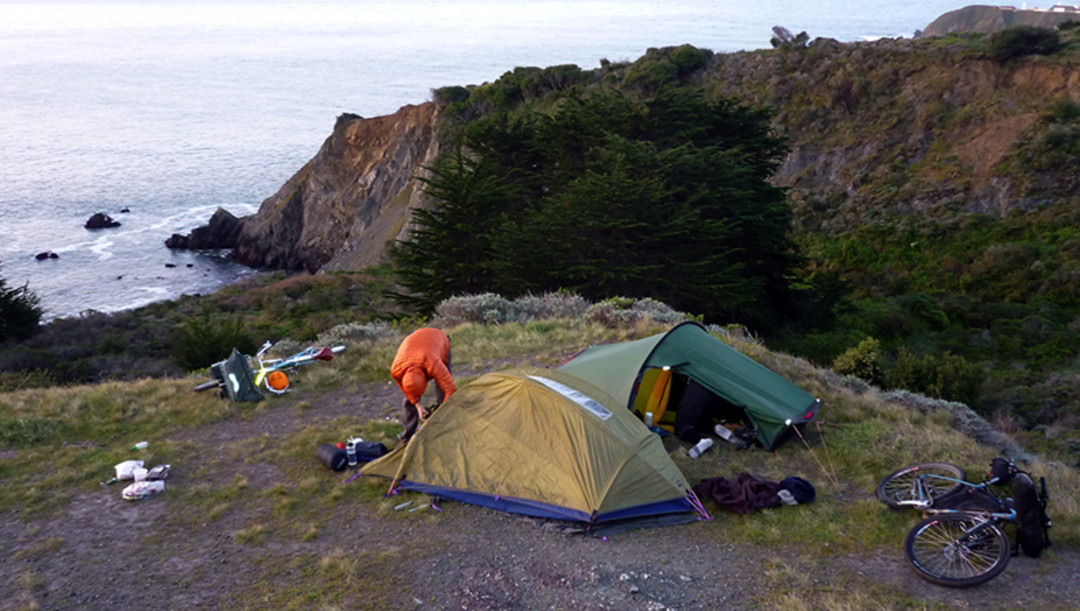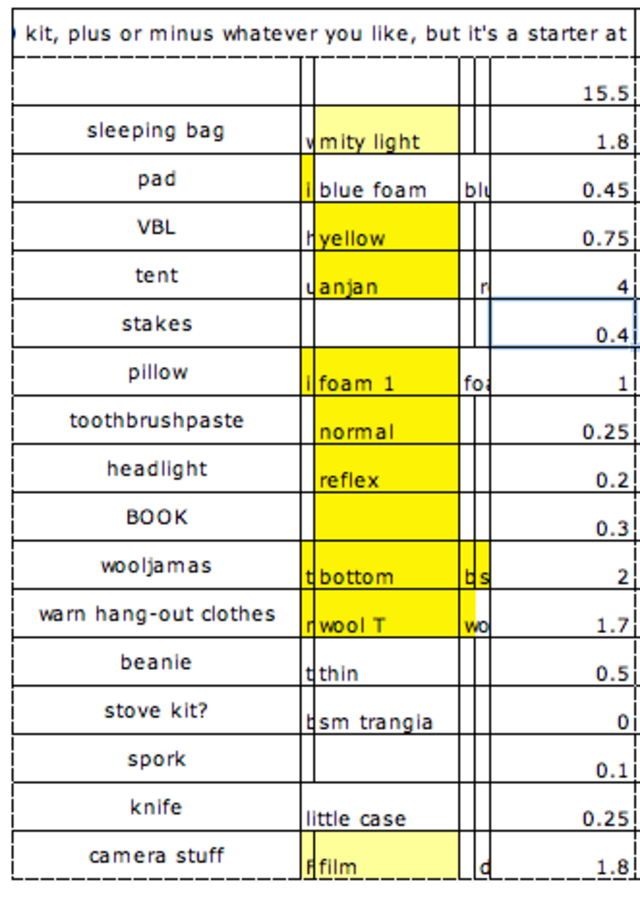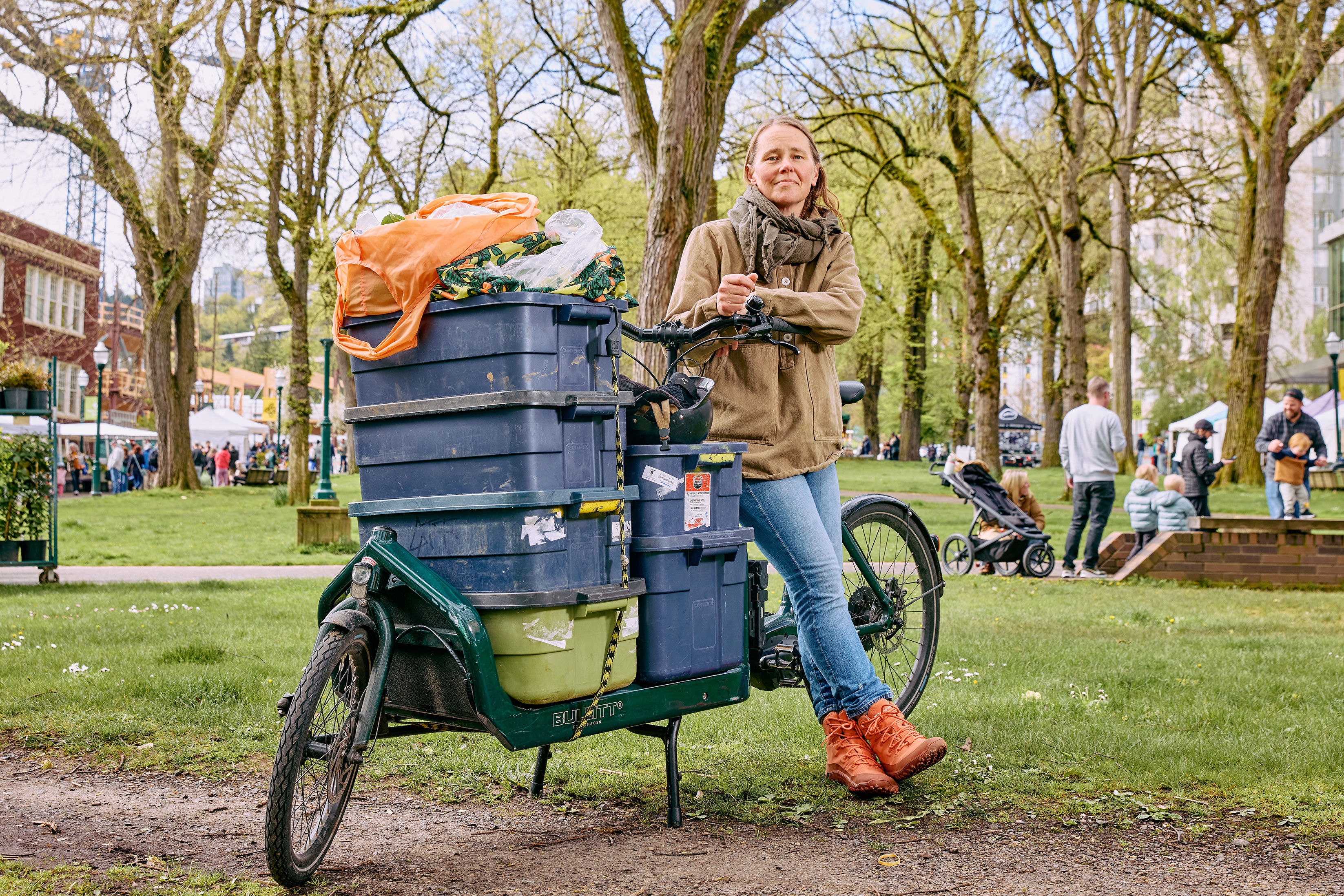Cycle Wild Wants You to Camp By Bike

Image: Grant Petersen
At around 10:00 p.m. on a weeknight in 2005, Grant Petersen filled a rucksack with a tent, some food, a book, and a headlamp. He told his family, “I’m going to sleep out in the hills tonight.”
To escape the city, he biked just a mile and a half from home. Soon, he and his coworkers were riding out to the woods after work—arriving after dark, leaving before 9:00 a.m. the next day to make their morning commutes. Peterson called the trips “sub-24-hour overnights (S24Os).”
Over the next few years, he took more than 90 of these excursions. He and his friends encountered more and more bike campers, many wandering the hills alone, lured by the wild.
They thoughy of themselves as renegades in a world of sleek touring cycles and cushy lodges. Touring had became the craze in 1973 when the Adventure Cycling Association mapped its signature Transamerica ride from Astoria, past Yellowstone and Grand Teton National Parks, to Yorktown on the Chesapeake Bay.

Petersen's typical camping checklist, with weights.
In 2006, inspired by bike campers like Petersen, Matt Picio, now founder and former president of Cycle Wild, velcroed a milk crate laden with camping gear to the back of his Gary Fisher mountain bike, hopped on, and followed a friend to Fish Creek near the Clackamas River. Afterward, he wanted nothing more than to go back with a group and tell stories around the campfire.
That desire became Cycle Wild. The nonprofit, all-volunteer group leads trips within Portland’s “rideshed”—the 70 miles around the city that most bikers can reach in a day. Picio estimates that the rideshed is comprised of 148 developed campgrounds.
The average weekend backpacker might make it 24 miles in one trip, while a cyclist can ride up to 72 miles in the same time. Picio’s favorite route packs 400 miles into one week. It runs down the coast to Newport, then circles back up the Clackamas river valley to Portland.
On tours, Picio’s seen everything from riders on shiny touring bikes with front and rear racks to scruffy mountain bikers who load up a milk crate with food and a hammock. Bike campers carry whatever fits, from boom boxes to backpacking stoves, loaded into panniers or crates. They ride the MAX for the first few miles, get a friend to drive them to a scenic byway, or start pedaling right out the door.
“There is no wrong way to camp by bicycle,” Picio says.
Petersen says even if you forget your tent poles and sleeping bag on an S24O (as he’s done before), it’s still cool. “It’s just one night,” he says.
We recommend you bring along these things:
- Tent/hammock/tarp
- Food/water
- Camp stove
- Sleeping bag
- First Aid Kit
- Cellphone
- Maps
- Rear Rack
- Panniers/milk crate/trailer
- Bike lights
- Flashlight
- Extra Batteries
- Sunscreen
- Bike tool/Patch kit
- Frame pump
- Tire levers




